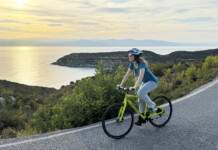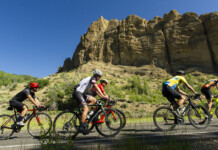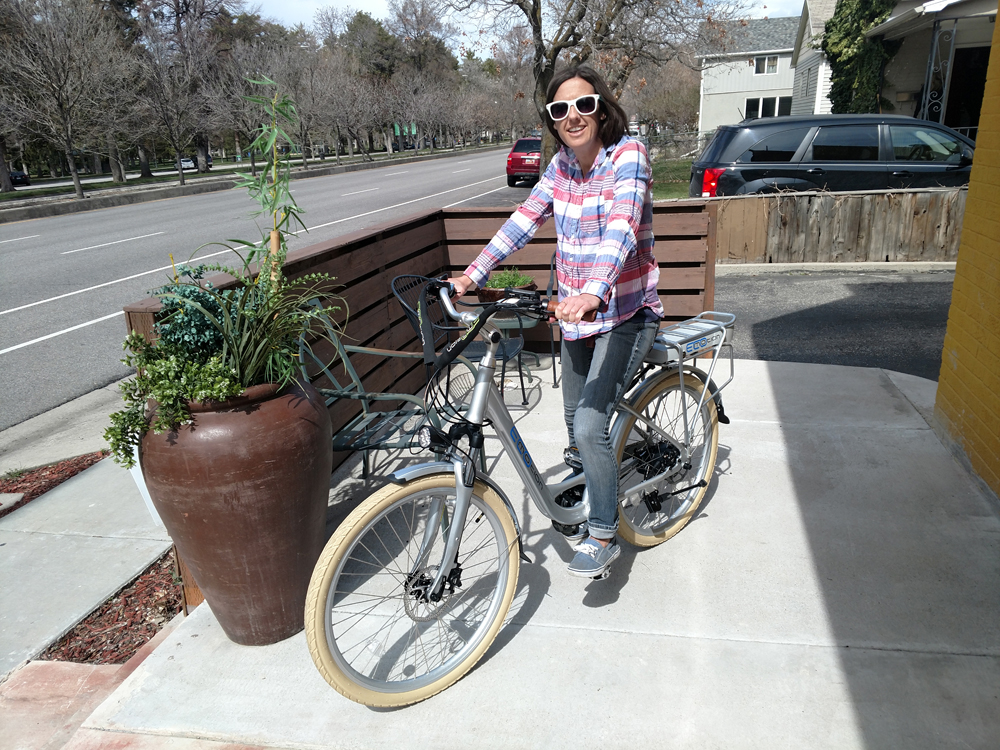By Jamie Morningstar — It’s riding season! The events are ramping up, the cycling groups (organized and disorganized) are planning their weekend rides, and everybody’s stoked to get out on the road.
If you’re relatively new to road riding, you may be feeling nervous about riding with a group or signing up for a big event. You want to be polite, you want to be able to hang, you don’t want to break some taboo that you didn’t even know existed. So, whether you’ve signed up for an event or you’re meeting up with friends of a friend for a Saturday morning ride, here’s the 101 of group riding.
Rule #1: Signal.
There are really only four hand signals you need to know: Left, right, stop, and pointing at obstacles. Signals are essential in group rides because it turns out other riders are terrible at reading your mind, you’re not so great at reading their minds, and you’re riding close enough together that you have limited time to figure out what other people are doing and respond. So, make it easy on everybody and signal.
Remembering signals is easy:
- Right or Left Turn: Point the direction you’re turning. If you must, you can also signal right by putting your left arm up at a 90-degree angle, but, honestly, it’s easier to just remember to point the way you’re turning.

Left turn signal. Photo by Jamie Morningstar 
Right turn signal. Photo by Jamie Morningstar - Stop: Point down with your palm facing backwards. You can think of this like you’re pushing the rider/driver/whatever behind you back.

Stop or slowing signal. Photo by Jamie Morningstar - Pointing at obstacles: Just point at the weirdly divoted manhole cover, the pothole, the gravel, or whatever else might trip up a rider behind you. This is important because when riding with a group the riders behind you have a lot to pay attention to and may not be able to see around you to see the obstacle that’s coming. So do them a favor and point it out.
There are a million other signals you can pick up along the way and look super spiffy (gravel, tuck in, come pass me and pull for a while, railroad tracks, etc), but if you remember these four you’ll do just fine.
Rule #2: Talk.
This is basically an extension of Rule #1. Verbally communicate everything! You’re riding in close proximity to somewhere between 2 and 2,000 people and you owe it to their safety and your own to communicate what’s going on. This is especially true for the people right behind you – they can’t see around you to know what’s going on and they’re depending on your signals and verbal cues to stay safe. And if it comes down to the question – should you use a hand signal or should you verbally call out what’s going on? The answer is, why not both?
What should you call out? Basically everything. “Stopping” “Slowing” “Weird intersection ahead” “Right turn” “On your left” “Clear right” “Car back” “Car Up” – just say it.
Let’s talk about communicating while passing. For the love of God, communicate when you’re passing. I’ve had numerous close calls when I had no idea somebody was passing me on my left and didn’t ring a bell, call out, or otherwise indicate their presence. That’s just dumb. Be a good neighbor and call out “on your left” as you, safely, pass a slower rider on their left. If you’re at the front of a draft line, call out your pass and let folks know there’s a group behind you. Even if you’re in the middle of a passing draft line, call out your pass. If you’re at the end of the draft line, let folks know you’re the caboose.
Occasionally you’ll get somebody at an event who gets real touchy about you calling out that you’re passing. I think it’s something between them being mad that they’re going slower (which is silly – ride your own ride and love it!) and because they think you’re showing off. Their frustration does not give you the liberty or duty to endanger both of you – call out your pass every time. And, even better, call out your pass and couple it with a friendly, “good morning!” and a healthy dose of Rule #4.
Rule #3: Draft. With care.
You can save 15-40% of your effort on a ride by drafting, so drafting is awesome. You can also get yourself into a world of hurt as an experienced drafter or by riding behind somebody inexperienced.
Drafting is a great group-riding skill. If you want to learn to draft, watch a few of the ten million YouTube videos on effective and safe drafting and ask an experienced buddy to practice with you.
If you want to draft during an event or group ride (assuming an obvious peloton doesn’t already exist), always ask somebody if it’s ok if you hop on with their group or on their wheel. You want them to know you’re there and be ok with your presence – for their safety and for your own.
Remember that in drafting, it’s the follower who is the most likely to get hurt. “Touching wheels” (when the wheel of a drafter touches the wheel in front of them) is far more likely to go down than the bike in front. This is because it’s much easier to recover from your back tire stopping (a skid) than your front tire stopping (usually resulting in an endo or end-over-end crash) or leaning into the front rider’s rear wheel which can cause the follower’s bike to lose steering and slide out. So if somebody is drafting off of you, be a courteous rider and avoid braking, coasting, or other speed changes as much as possible and use ample doses of Rule #1 and Rule #2. And if you are drafting behind someone, never overlap your front wheel with their rear wheel.
Rule #4: Connect.
Cycling is this magical mix of independent effort and connected camaraderie. So enjoy it! When you see somebody with a smashing matching shoe-and-helmet combo, let them know you appreciate their style. Wish other riders on the trail a pleasant morning. If you pass somebody, give them a little cheer or let them know they’re looking strong. Always compliment a cute or clever jersey design. Brighten somebody’s day out there on the road and support your fellow cyclists.
There are a million other cycling rules, guidelines, niceties, and norms. You’ll pick them up over time. In my experience, if you remember these four, you’ll be a welcome addition to any group. Happy riding!








